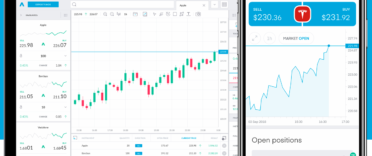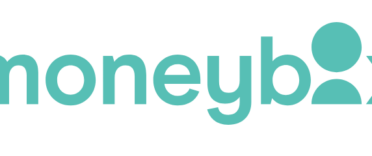
What is Pepperstone?
Pepperstone is an Australian online broker which launched back in 2010 and has since evolved into a global brand with offices in London, Dubai, and Nairobi among others. It's aimed at traders who want to focus on spread betting, CFD and Forex trading.
Every day, Pepperstone processes an average of $12.5bn of trades which makes it one of the largest brokers in the world. More than 400,000 traders use Pepperstone on a daily basis.
Since its inception, Pepperstone has won several investment awards from major players including Deloitte and Investment Trends. In the UK, the platform is regulated by the FCA for extra peace of mind.
How does Pepperstone work?
On Pepperstone, the two main ways to trade are through spread betting and CFD trading. You can't buy and hold shares in companies, you can't buy ETFs and you can't invest via an ISA.
As such, Pepperstone is only aimed at traders who want to trade derivatives like CFDs. It's worth keeping in mind, however, that CFDs are high-risk instruments and around 75.3% of retail investors lose money when trading spread bets and CFDs with Pepperstone.
If you're happy to take the risk, Pepperstone is a great option as it comes with access to more than 1,200 instruments across different asset classes such as FX, ETFs and commodities. There are also four trading platforms to choose from including MT4, MT5, Trading View and cTrader.
For those who want to give the platform a go without risking their cash, there is a demo account that can be accessed easily. There are also a range of learning resources to help you get your knowledge up to speed if you're a beginner trader.
Pepperstone key features
Pepperstone comes with a range of different features including:
- Over 1,200 instruments across a range of asset classes such as FX, ETFs, and commodities
- Choice of four powerful platforms including MT4, MT5, Trading View, and cTrader
- Opt for spread betting to make CGT-free trades
- Trade on the go with mobile, tablet, and browser access
- Learn more about derivatives through webinars, educational videos and other learning resources
- Get used to trading on Pepperstone with the free demo account
- Access 24/7 award-winning multilingual support via live chat, email and phone
Pepperstone products
Pepperstone offers a range of products which we outline below.
Pepperstone accounts
You can choose from four different trading accounts when you create your profile. These include:
- Standard - A commission-free spread-based account with variable spreads.
- Razor - Commission is charged with Razor but it's a low-cost trading account with raw spreads.
- Managed Account - This account comes with a designated money manager.
- Spread betting - A tax-advantageous account (no CGT) which is also commission-free.
Pepperstone trading platforms
There are four trading platforms you can choose from when you create an account with Pepperstone. These include:
- MetaTrader5 - Designed by MetaQuotes, this platform is designed for power and precision with faster processing times.
- MetaTrader4 - This platform comes with access to indicators and Autochartist which helps identify high probability trades.
- cTrader - Designed to be intuitive and easy to use, cTrader still comes with advanced features.
- Trading View - Aimed at technical traders, this is a globally recognised platform with popular charting and trading capabilities.
Pepperstone educational resources
Pepperstone offers a range of educational resources to help traders learn the ins and outs of CFD and Forex trading. These include:
- Past webinars discussing the latest developments in the industry
- Educational videos on topics ranging from CFDs to spread betting to trading various markets
- Trading guides and articles on various topics
- A dedicated Forex trading course
All of these materials, in addition to the free demo account, make it easier to get to grips with trading derivatives so you can decide whether they're the right approach for your investment needs.
Pepperstone: Markets and ways to trade
Pepperstone allows you to trade over 1,200 different instruments across a range of different markets. The markets on offer include:
- Forex - Access 90+ currency pairs and trade derivatives. Explore Forex trading further with currency indices which allow you to speculate on the performance of a particular currency against several other currencies.
- Commodities - Trade a range of commodities CFDs including metals, energies, soft commodities (like cocoa, coffee, and other agricultural commodities), and hard commodities (natural resources like aluminium, copper and lead).
- Indices - Trade Indices CFDs and spread bets with access to commission-free trading across 14 major stock markets with no hidden markups.
- Shares - Trade a range of Shares CFDs across different regions around the world.
- ETFs - Trade more than 100 ETF CFDs across a range of sectors including mining, energy, bond markets and retail.
Ways to trade: Spread betting vs CFDs
Spread betting and CFDs are both leveraged products where you pay a small deposit (margin) to speculate on an asset's movement in the market. Because both require margin trading, they come with significant risks. In fact, both forms of trading are illegal in some countries including the United States.
The differences between the two are fairly nuanced, but a key reason why people pick one over the other is taxation. In the UK, people who opt for spread betting pay no stamp duty and capital gains tax (CGT). Those who opt for CFD trading also pay no stamp duty but may be liable for capital gains tax on their profits. Spread betting, in particular, is CGT-free because it is seen as a type of gambling. Both products are exempt from stamp duty because you typically only pay stamp duty on assets you actually own. When you trade derivatives, you don't own the underlying asset.
How much does Pepperstone cost?
The table below outlines the key costs associated with using Pepperstone. Depositing and withdrawing funds is free with Pepperstone and while many trades are commission-free, Pepperstone makes some of its money via spreads which vary depending on what you're trading. The spread is the difference between the buy price and the sell price of an instrument and is typically quoted in pips (short for point in percentage).
A lower spread is generally better, but it's worth keeping in mind that some brokers charge additional commission fees on top of the spread. Pepperstone, for instance, offers lower spreads on their Razor accounts, but additional commissions apply on Forex trades.
| Type | Spread/ Commission |
| Forex | Standard min spread from 0.9 to 1.10 on popular currency pairs.
Spread bet min from 0.6 to 1 on popular currency pairs. Razor min spread ranges from 0 to 0.20 on popular currency pairs but additional commission fees apply. |
| Commodities | Min spread ranges from 0.05 to 8.00 on popular commodities |
| Indices | Min spread ranges from 0.4 to 10.00 on popular indices. |
| Shares | Spread bet spreads are 0.10% (4pt for the US share and ETF CFDs only)
Commissions range between 0.07% to 0.20% (0.02USD per share for the US Share and ETF CFDs only) |
Additional commissions apply if you opt for a Razor account. These are charged per 1 standard FX lot per side. We have highlighted these in the table below.
| Account currency | MT4/MT5 | cTrader | TradingView |
| GBP | £2.25 | $3.00 (converted at spot rate) | $3.5 (converted at spot rate) |
| USD | $3.50 | $3.00 | $3.5 |
| EUR | €2.60 | $3.00 (converted at spot rate) | $3.5 (converted at spot rate) |
| CHF | CHF 3.30 | $3.00 (converted at spot rate) | $3.5 (converted at spot rate) |
For cTrader and Trading View, if your account is not in USD, the commission fee will be converted to USD at the current spot rate (i.e. the current open market price) in your account currency.
What is the minimum deposit with Pepperstone?
Pepperstone doesn't have a minimum deposit. You can deposit funds for free using a range of different methods including PayPal, domestic and international transfers, and debit and credit cards. Withdrawals are also free of charge.
How to open an account with Pepperstone
Opening an account with Pepperstone is designed to be as quick and easy as a process like this can be; meaning that due to regulatory requirements there's still a lengthy form to fill out if you want to set up a live trading account.
You can sign up with your Apple, Google, or Facebook credentials or simply use your email. To create your profile, you'll need to provide some personal information including:
- Your name
- Your date of birth
- Your country of residence
- Your mobile phone
This basic form is all it takes to create your profile. You can then head straight to the demo account and try out the platform.
However, if you want to set up a live account, you'll need to go through a few more steps, including selecting your preferred trading platform. The options include:
- MetaTrader 5
- MetaTrader 4
- cTrader
- Trading View
You will then need to select your account type from the four options which include:
- Standard
- Razor
- Managed Account
- Spread betting
Once you have selected your account, you will then need to choose your base currency which will be GBP if you're based in the UK.
Once you've completed this step, you'll then need to answer a series of regulatory questions, some of which include:
- Where you're getting your trading funds from
- What industry do you work in
- How much money you make
- Whether you're employed
- What your trading experience is (beginner/intermediate/advanced)
Finally, in order to be allowed to trade, you will need to complete an appropriateness form to determine your level of experience. This is very common when applying to trade derivatives on various platforms.
Following successful completion of this form, you'll need to fill out some more personal details, sign a declaration and potentially go through a verification process before you're allowed to trade.
Pepperstone customer reviews
On Trustpilot, Pepperstone is rated 4.4 out of 5.0 based on around 2,500 customer reviews. The online trading platform has an overall score of "Excellent" with 81% of customers giving it 5 stars and around 7% of customers giving it 1 star.
Those who gave it 5 stars were particularly happy with the level of customer service they received as well as the competitive spreads offered by the platform. Those who gave it 1 star had complaints about orders not going through and the platform freezing. Some had concerns about not being able to withdraw their money.
Overall though, most Trustpilot reviewers seem happy with their Pepperstone experience.
Alternatives to Pepperstone
There are a range of Pepperstone alternatives on the market which could work better for you depending on your needs. Some popular alternatives include eToro* and Trading 212.
eToro
eToro is a popular online trading platform with more than 30 million customers around the world. Much like Pepperstone, eToro offers CFD trading as well as Forex trading. However, eToro also offers exposure to other asset classes including opportunities to invest in fractional shares. Those who want to benefit from a tax wrapper can invest via an ISA through eToro's partnership with Moneyfarm. There are no commission fees with eToro, but currency conversion fees can be on the high side (ranging from 1.5% to 3%).
eToro has a 4.2 out of 5.0 rating on Trustpilot based on more than 24,000 reviews.
Trading212
Trading 212 is an online investment platform which comes with commission-free trading and low FX fees (set at just 0.15%). Like eToro and Pepperstone, Trading 212 comes with the opportunity to trade CFDs and Forex. But, unlike Pepperstone, it also offers access to other assets such as ETFs and fractional shares. There is also the option to invest via an ISA, though like eToro and Pepperstone, there is no SIPP option.
Trading 212 has a 4.6 out of 5.0 rating on Trustpilot based on more than 30,000 reviews.
The table below compares the different alternatives to help you decide which one is right for your CFD trading needs.
| Pepperstone | eToro* | Trading 212 | |
| Fractional shares | No | Yes | Yes |
| ETFs | No (ETF CFDs only) | Yes | Yes |
| CFDs and other derivatives | Yes | Yes | Yes |
| Forex trading | Yes | Yes | Yes |
| Stocks and Shares ISA | No | Yes (via a Moneyfarm partnership) | Yes |
| SIPP | No | No | No |
| Commission fees | Fees apply in some cases | FREE | FREE |
| Currency conversion fees | Fees apply in some cases | 1.5% to 3.0% | 0.15% |
| Inactivity fees | FREE | $10 per month after one year | FREE |
| Trustpilot rating | 4.4 out of 5.0 | 4.2 out of 5.0 | 4.6 out of 5.0 |
Pepperstone pros and cons
Below, we outline the key Pepperstone pros and cons.
Pepperstone pros
- CFD trading and spread betting options
- Has a 4.4 out of 5.0 Trustpilot score
- Free to deposit and withdraw funds
- No inactivity fees
Pepperstone cons
- No ISA or SIPP
- Limited investment options (just CFDs)
- Complex fees structure that varies based on your account of choice
- Not for beginners
Pepperstone: Is it the right choice for your needs?
Pepperstone is aimed at experienced traders who understand the high risks that come with trading derivatives. Spread betting and trading CFDs are both high risk activities which are banned in some countries (such as the US). More than 75% of traders lose money through spread betting and CFD trading via Pepperstone.
This isn't really a "set it and forget it" type of investment, so you also need the time to monitor the markets and react when it's appropriate to do so. If that's you, and you're particularly interested in a platform that focuses on this type of trading, then Pepperstone could be the right option for you.
That being said, for most retail investors, options like eToro* and Trading 212 could work better. While they offer access to derivatives, they also offer the opportunity to buy and hold shares (including fractional shares), as well as ETFs and other assets often within tax wrappers like ISAs. All investments come with risk, but alternative platforms will give you access to less risky investments which could be beneficial if you don't have the time or expertise to trade.
If a link has an * beside it this means that it is an affiliated link. If you go via the link Money to the Masses may receive a small fee which helps keep Money to the Masses free to use. But as you can clearly see this has in no way influenced this independent and balanced review of the product. The following link can be used if you do not wish to help Money to the Masses or take advantage of any exclusive offers - eToro.





